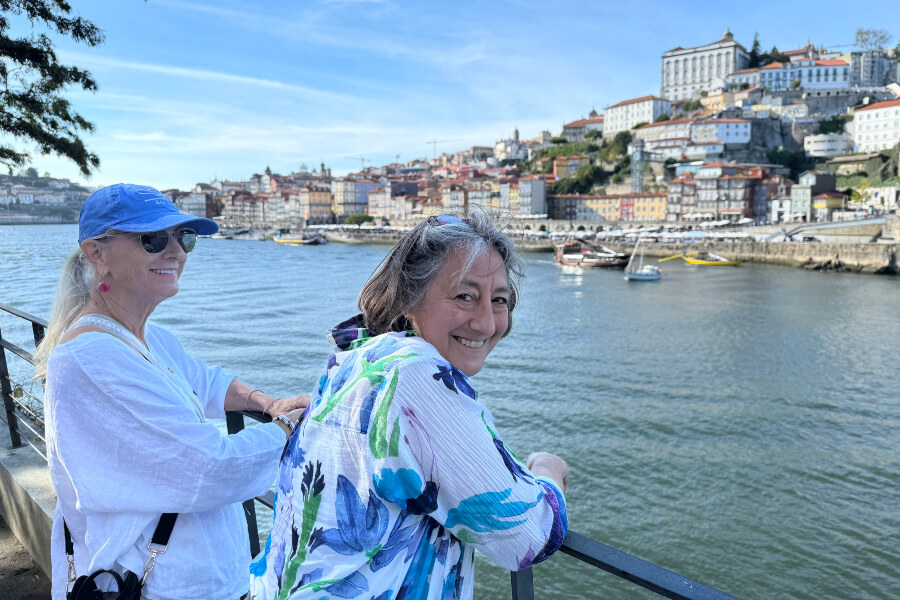While at one time, men dominated the new golden age of television, with such anti-heroes as Tony Soprano, Walter White, and Don Draper defining the medium, in the past few years, actresses, particularly veteran actresses, have reclaimed the airwaves.
These days, any high-profile mature actress doing great work, winning awards, and receiving popular and critical acclaim is most likely working in television, not movies.
Over the past decade, complex roles for women have moved to the small screen, and NextTribers know that when they want wonderful female-centric entertainment, they turn to premium cable, streaming sites, and network television rather than heading to the multiplex.
The Stars Align

Jessica Lange being her fabulous self on ‘American Horror Story’
An enormous number of top movie actresses, many of whom have won one or more Oscars, have made the move to television. These include Sandra Bullock (Bird Box), Julia Roberts (Homecoming), Jessica Lange (American Horror Story, Feud), Susan Sarandon (Ray Donovan, Feud), Jane Fonda (Grace and Frankie, The Newsroom), Patricia Arquette (Escape at Dannemora), Winona Ryder (Stranger Things), Viola Davis (How to Get Away with Murder), Holly Hunter (Here and Now, Top of the Lake), Sissy Spacek (Homecoming, Bloodline), Ellen Burstyn (The Tale, House of Cards), and Robin Wright (House of Cards).
The clincher is that this season the grande dame of the big screen, Meryl Streep, will come into your living room via the wildly popular Big Little Lies.
The grande dame of the big screen, Meryl Streep, is also jumping on the TV bandwagon.
The parts they are playing are more often than not strong and memorable, although also nuanced and quirky. In Bird Box, for example, Bullock plays an independent, somewhat arrogant artist who becomes a mother during an alien invasion and must lead her children to safety through a dystopian world. Sarandon and Lange do their best work in years as, respectively, tough broads Bette Davis and Joan Crawford in the miniseries, Feud, which proved that a story about older women refusing to be cast aside professionally by Hollywood could make gripping TV. In a particularly symbolic development, Wright took over the lead role in House of Cards, playing a pregnant 40-something US president after a sexual harassment scandal in the wake of the #MeToo Movement caused the show’s producers to have Kevin Spacey’s character killed off.
“Women want roles where they can carry the narrative,” said Thelma Adams, film critic and the author of the novel, Bittersweet Brooklyn. “Actors get better [at their craft] with age, but for women, roles in movies get fewer and fewer. They are often shut out from lead roles in movies because of the inherent bias.”
What’s Wrong with the Movies

Meryl Streep and Nicole Kidman in the upcoming Season 2 of ‘Big Little Lies’
Movies, with their bloated budgets and focus on opening-weekend box-office numbers, are not hospitable to actresses who want to play complex, multifaceted characters who are not likely to draw the young, mostly male audiences who are Hollywood’s target audience. “If you are the lead in a film and it doesn’t succeed at the box office, you take the blame. But if you are part of a strong TV machine, it’s an ensemble that works together to reach an audience. You don’t have the burden of success or failure solely on your back,” said Adams.
‘The idea is to put women at the center of the story,’ said Reese Witherspoon.
The trend of strong women characters on the small screen is fueled by the fact that more women are working behind the cameras. One of the most-anticipated shows on the small screen in 2019 will be the second season of HBO’s Big Little Lies, which was produced by its star Reese Witherspoon’s production company, Hello Sunshine, and won Emmys and Golden Globes for Nicole Kidman and Laura Dern, who recently became the rare over-50 woman to grace the cover of Vanity Fair. The series combines comedy about female competitiveness with deep drama about domestic abuse in a picture-perfect setting. The other big change this coming season—besides the addition of le Streep—is that season-one director Jean-Marc Vallée has been replaced by a female director, Andrea Arnold.
“The idea is to put women at the center of the story,” said Witherspoon in a Vogue cover story that hit the stands in January. She is at work on a number of high-profile projects, including a new series about morning television for Apple TV in which she will star with Jennifer Aniston.
“There are enough women with their hands on the controls now to change the industry,” said Adams, citing such showrunners as Shonda Rhimes (Grey’s Anatomy, Scandal, How to Get Away with Murder) and Jenji Kohan (Weeds, Orange is the New Black, GLOW), in addition to Witherspoon.
Women in Charge

Woman in Charge: Ava DuVernay’s ‘Central Park Five’ is slated for 2019. Image: Jean_Nelson/DepositPhotos
Like actresses, women directors are also moving from the big screen to the small. Oscar-winner Jane Campion directed the prestigious miniseries Top of the Lake, and Susanne Bier made Bird Box and The Night Manager. Upcoming projects by women directors include Julie Taymor’s The Two Glorias, a movie about Gloria Steinem that stars Julianne Moore that will be released in 2020, and Ava DuVernay’s Central Park Five, a miniseries about the youths wrongly convicted of an assault in New York, slated for 2019. As women have taken the reins, the range and diversity of female characters has evolved.
Orange is the New Black, the Netflix women’s prison series, is an interesting case in point. It started out primarily focused on a 30-something blonde (Taylor Schilling), but with each season, it has developed the backstories of other inmates and has become a showcase for incredible character actresses of a certain age, among them Kate Mulgrew, Selenis Leyva, Lea DeLaria, and Annie Golden. Not long ago, it would have been unthinkable that mature actresses like these would have been at the center of a popular and critically acclaimed show.
As women have taken the reins, the range and diversity of female characters has evolved.
And although there were many young actresses on CBS’s The Good Wife, the show’s spinoff, The Good Fight, is centered around 60-something Christine Baranski’s character, Diane Lockhart, and her personal and professional struggles.
These sophisticated, intelligent shows are drawing savvy viewers. “TV has become cool,” said Tali Nesher, an Los Angeles-based college admissions consultant who used to work in the television industry as a tech /camera coordinator and TV literary agent. She said she and her friends get much more excited over a new season of OITNB than any new film. “Frankly, movies have gotten bad and not worth the high cost of admission. TV has better writing. TV has more time for character development,” she says, pointing out that when women talk about “bingeing” today, they are most likely describing their enthusiasm for a TV show, not bemoaning the fact that they have broken their diet.
A Watershed Moment

Lily Tomlin and Jane Fonda in ‘Grace and Frankie’
Looking to the future, Adams foresees more and better roles for actresses as women in the television industry emulate Mark Wahlberg, the actor who has often put his own money into developing projects. “The more women control the financing, the better their projects will get,” said Adams. “Getting female-driven investment funds involved could help.”
Perhaps the watershed moment for NextTribers in this new television era came early in the first season of the Netflix series, Grace and Frankie, created by Marta Kauffman (Friends), which has just released its fifth season. It stars Jane Fonda and Lily Tomlin as two very different women who help each other cope when their husbands (Martin Sheen and Sam Waterston) come out of the closet and announce that they want to marry each other.
‘I refuse to be irrelevant,’ Jane Fonda’s character cries.
Driven to nicotine, Fonda and Tomlin go to a convenience store to buy cigarettes. But a clerk there ignores them as he flirts with a young blonde, and Fonda chews him out. Back in the car, she apologizes to Tomlin for her behavior, but adds, “I refuse to be irrelevant.” Fonda is shocked but admiring as Tomlin takes a pack of cigarettes that she has stolen out of her purse. “It’s OK. I learned something. We’ve got a superpower. You can’t see me, you can’t stop me,” Tomlin says, offering Fonda a drag, and they peel out, joking about robbing a bank, shades of Thelma and Louise. It’s impossible to imagine anything that smart, sophisticated, and darkly funny, with such talented actresses, anywhere but on the small screen.
These scripted lines could be about women’s quest for meaningful screen time in this new television renaissance. The women of television refuse to be irrelevant, and now you can see them all the time—and they can’t be stopped.





















0 Comments